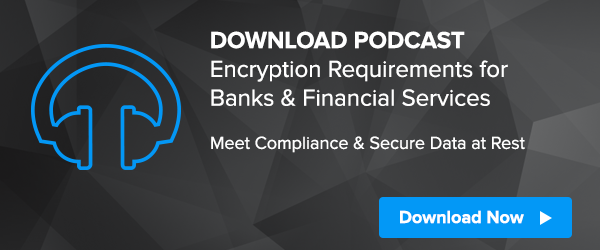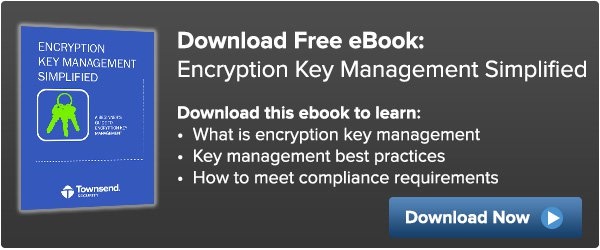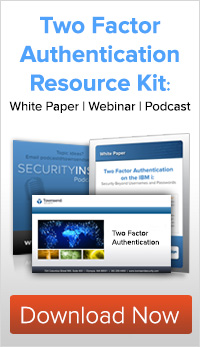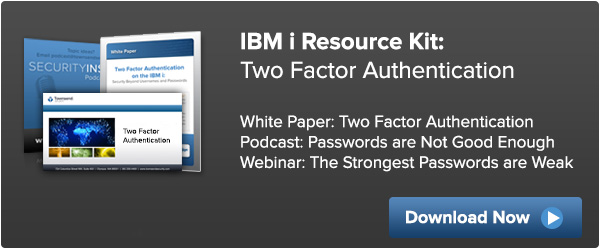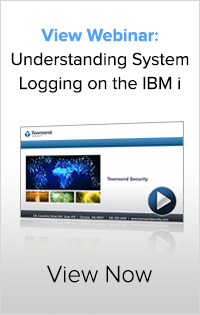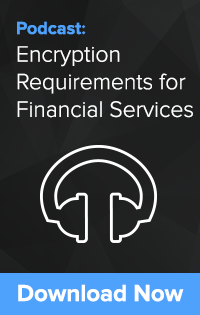 I recently sat down with Patrick Townsend, Founder and CEO, of Townsend Security to discuss the Gramm-Leach-Bliley Act (GLBA), the Federal Financial Institutions Examination Council (FFIEC), and what they say about protecting non-public personal information (NPI) and personally identifiable information (PII).
I recently sat down with Patrick Townsend, Founder and CEO, of Townsend Security to discuss the Gramm-Leach-Bliley Act (GLBA), the Federal Financial Institutions Examination Council (FFIEC), and what they say about protecting non-public personal information (NPI) and personally identifiable information (PII).Hi Patrick. 95% of the top US commercial banks have a network security grade of “C” or below (according to SecurityScorecard’s latest Financial Cybersecurity report). In the past we have talked about the perimeter being weak and this report really supports that - which in turn supports the importance of encrypting data at rest.
Yes, the financial industry is a little bit late to the game in terms of protecting data at rest with encryption. I know this might surprise some people when they hear this. There has been an increased level and sophistication of attack and cybercriminal activity towards financial institutions. We are seeing attacks on banks, insurance companies, and many others. And it makes sense, right? Verizon recently reported that the vast majority of these attacks, around 90%, have a financial motive. Yes, these actors have other interests, but largely, data breaches and attacks have a financial motive, which makes banks a natural target.
Historically, banks have not had much compliance pressure to implement encryption – which is now changing. We are seeing this happening now, for example, in New York with the Department of Financial Services regulations. There is a lot more pressure for financial institutions to encrypt data at rest, along with properly managing encryption keys – and it is only going to continue with more regulations and more requirements.
Let’s talk about compliance regulations. The finance industry arguably falls under more than any other industry. Can you talk about the various regulations?
You are absolutely right. Financial institutions do cross a lot of boundaries – GLBA/FFIEC, PCI DSS for credit cards, SOX if they are publicly traded, privacy regulations, etc. There is just a broad set of compliance regulations coming into play.
Banks who handle credit cards have always fallen under PCI DSS. But PCI DSS focuses specifically on credit card data – credit card number, expiration date, cardholder name, etc. Specific to the banking industry, GLBA and FFIEC are requiring these organizations to protect non-public personal information (NPI). At the end of last year there was an update from the FFIEC covering best practices on strengthening the regulations around encrypting and protecting NPI. The FFIEC has been very active in that area and is fully empowered to ensure the security and confidentiality of customer records and information.
Furthermore, we just saw the state of New York and the Department of Financial Services promote some new regulations in the area of data security. NYDFS covered a lot of ground, all the way from specifying the requirement of a compliance officer right down to encrypting private data. We are seeing an evolving regulatory structure that is moving towards more security and data protection, not less, and there is no question that across the board compliance regulations and banks are having to step up to better protect data with provable technologies. Encrypting data at rest is an evolving area, but has certainly been moving at a rapid pace.
When you talked about PCI you covered what credit card numbers are required to be encrypted. What are some examples of NPI that needs protection under GLBA?
Think of it as any kind of sensitive data that could be used by a cyber criminal. For example:
- Any information an individual gives you to get a financial product or service (for example, name, address, income, Social Security number, or other information on an application)
- Any information you get about an individual from a transaction involving your financial product(s) or service(s) (for example, the fact that an individual is your consumer or customer, account numbers, payment history, loan or deposit balances, and credit or debit card purchases)
- Any information you get about an individual in connection with providing a financial product or service (for example, information from court records or from a consumer report)
Along with encryption also comes key management, which has often been described as the most difficult part of encryption.
Yeah, we often say that encryption is the hardest part of data security and key management is the hardest part of encryption. Why is that? When you encrypt data, you are using a special secret, known as an encryption key (something that can’t be guessed or predicted) to keep the encrypted data safe.
First, businesses should be using standards-based encryption like AES or RSA, and these algorithms require keys to make them work. Key management then becomes the real challenge for financial institutions because they need to create and manage provably strong and protected encryption keys. Regarding strong keys, it is important to note that a password, or even what you think of as a strong password, is not adequate. This is the function of an enterprise key management solution. At Townsend Security we have our Alliance Key Manager, which is validated to industry standards (FIPS 140-2), and that means that encryption keys are strong, stored in a protected fashion, away from the data that they are protecting. All of that becomes a very important part of an encryption strategy because encryption is only as strong as the protection of the keys.
Critical functions of a key manager include:
- Ensure origin and quality of keys
- Manage keys through entire lifecycle, not just store them remotely
- Use accepted and standards-based encryption algorithms
- Implement dual control, separation of duties, split knowledge
- Ensure that keys are securely backed up, at all times
- Implement strong authentication mechanisms
- Protect and restrict access to encryption keys
Thanks Patrick. Any final thoughts you’d like to share?
We really believe in the term “Compliance out of the box.” Townsend Security provides several solutions that can help members of the financial services industry protect NPI/PII and help them meet the vast number of evolving compliance requirements. We provide encryption key management solutions that are validated to meet PCI DSS, as well as a variety of client-side applications and SDKs to make encryption projects easier than ever. Alliance Key Manager is a mature product that is in use by thousands of customers, worldwide.
To hear this interview in it’s entirety, download our podcast “Encryption Requirements for Banks & Financial Services” and hear Patrick Townsend, founder and CEO of Townsend Security, further discuss encryption, key management, and meeting compliance requirements specific to financial services.

